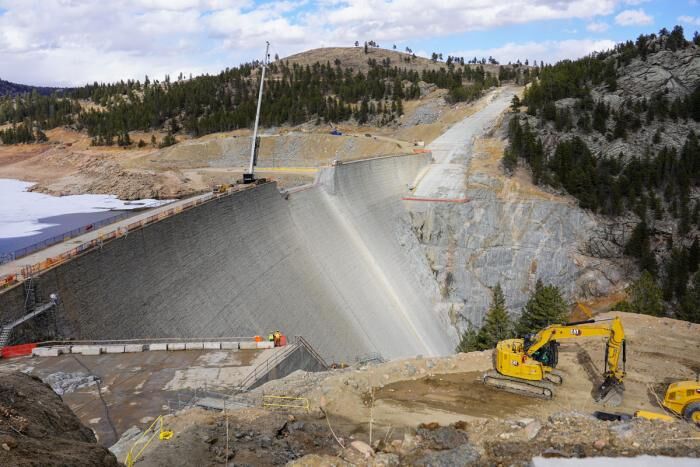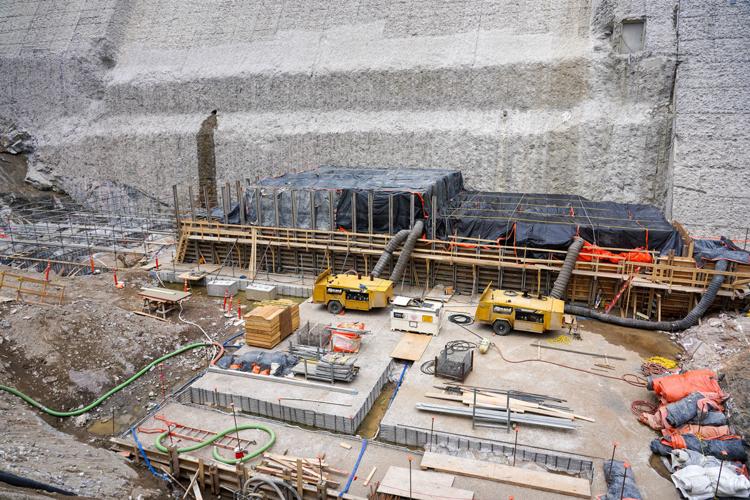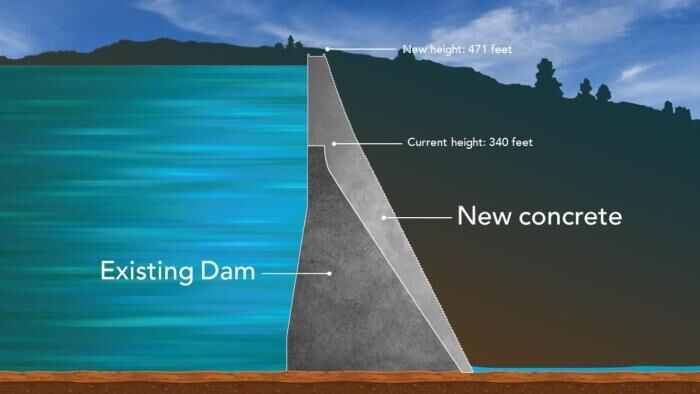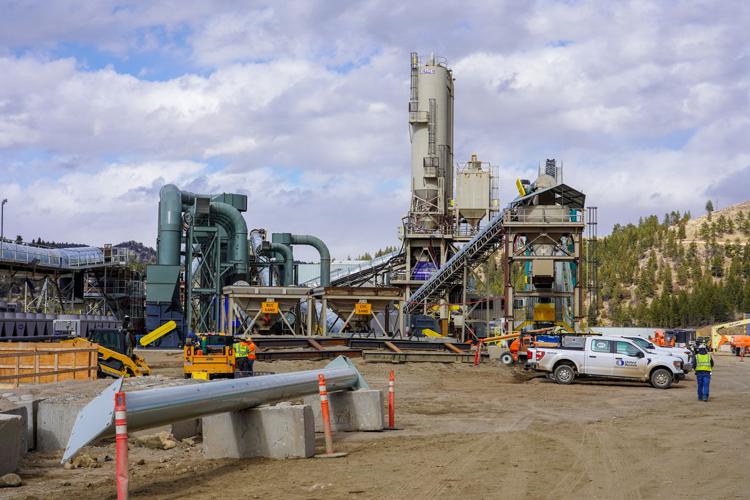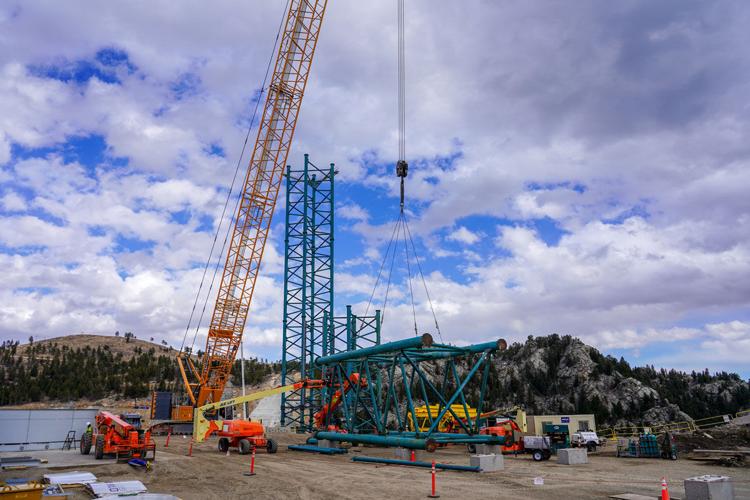Denver Water’s Gross Reservoir expansion project nears completion after years of delay
The project to raise the height of the Gross Reservoir dam to triple its capacity is about to commence after years of preparatory work, lawsuits, and legal squabbles with Boulder County.
In 2003, after the 2002 Hayman Fire scorched more than 138,000 acres on both sides of the South Platte River between Deckers and Lake George, the Denver Water department decided it needed to improve its storage capacity in its northern collection area. The permitting process began in 2003 and was approved by the U.S. Army Corps of Engineers in 2017.
Planning, pre-construction work and engineering began in 2019. Now the construction is starting in earnest.
“Over the past two years we’ve excavated 260,000 cubic yards of rock and placed 27,000 cubic yards of concrete to get the existing dam and the rock around it ready for expansion,” said Doug Raitt, Denver Water’s construction project manager for the Gross Reservoir Expansion Project.
“The next phase of the multiyear project begins in May, when crews will begin the process of building 118 new concrete “steps” that will create the higher dam. Construction on the expansion project began in April 2022 and is scheduled to wrap up in 2027,” according to a news release from Denver Water.
After years of legal jockeying with Boulder County, along with criticism from reservoir area residents accustomed to recreating on the reservoir, Denver Water was able to bypass the county’s permitting process and gained approval from the Federal Energy Regulatory Commission.
In November 2021 Boulder County finally threw in the towel on its demands to exercise local land use jurisdiction called “1041 powers.”
“We faced an impossible choice between more litigation which we would almost certainly lose and agreeing to a settlement that mitigates some of the impacts of this project and provides meaningful benefits to the neighbors and the environment.” said Boulder County Commissioner Matt Jones at the time. “We would not have agreed to a settlement if we thought we had a better outcome; unfortunately, the courts have held that Federal Power Act law overrules local law.”
As part of the settlement agreement that put $12.5 million towards mitigation for affected residents, Denver Water agreed to reserving a 5,000 acre-foot “dead pool” to provide habitat even at low water.
“In addition to environmental commitments Denver Water has made to communities surrounding the project, agreements are in place that tie this project directly to protecting South Boulder Creek, as well as the Fraser, Williams Fork, Blue and Colorado rivers,” said the release.
Gross Reservoir, located southwest of Boulder at an elevation of 7,282 feet, was created in 1954 and was designed to hold roughly 42,000-acre-feet of water. With the existing dam, at 340 feet tall, raised by 131 feet the expanded reservoir will hold about 119,000-acre-feet of water — more than tripling its current capacity.
According to the Environmental Protection Agency, one acre-foot of water will supply two average families using about 400 gallons of water per day for a year.
The reservoir will provide water security for more than 1.5 million residents and will provide flood protection along South Boulder Creek through Eldorado Canyon.
The existing pool has 418 surface acres and 10.9 miles of shoreline. With the expanded pool, the surface area will increase to 842 acres.





